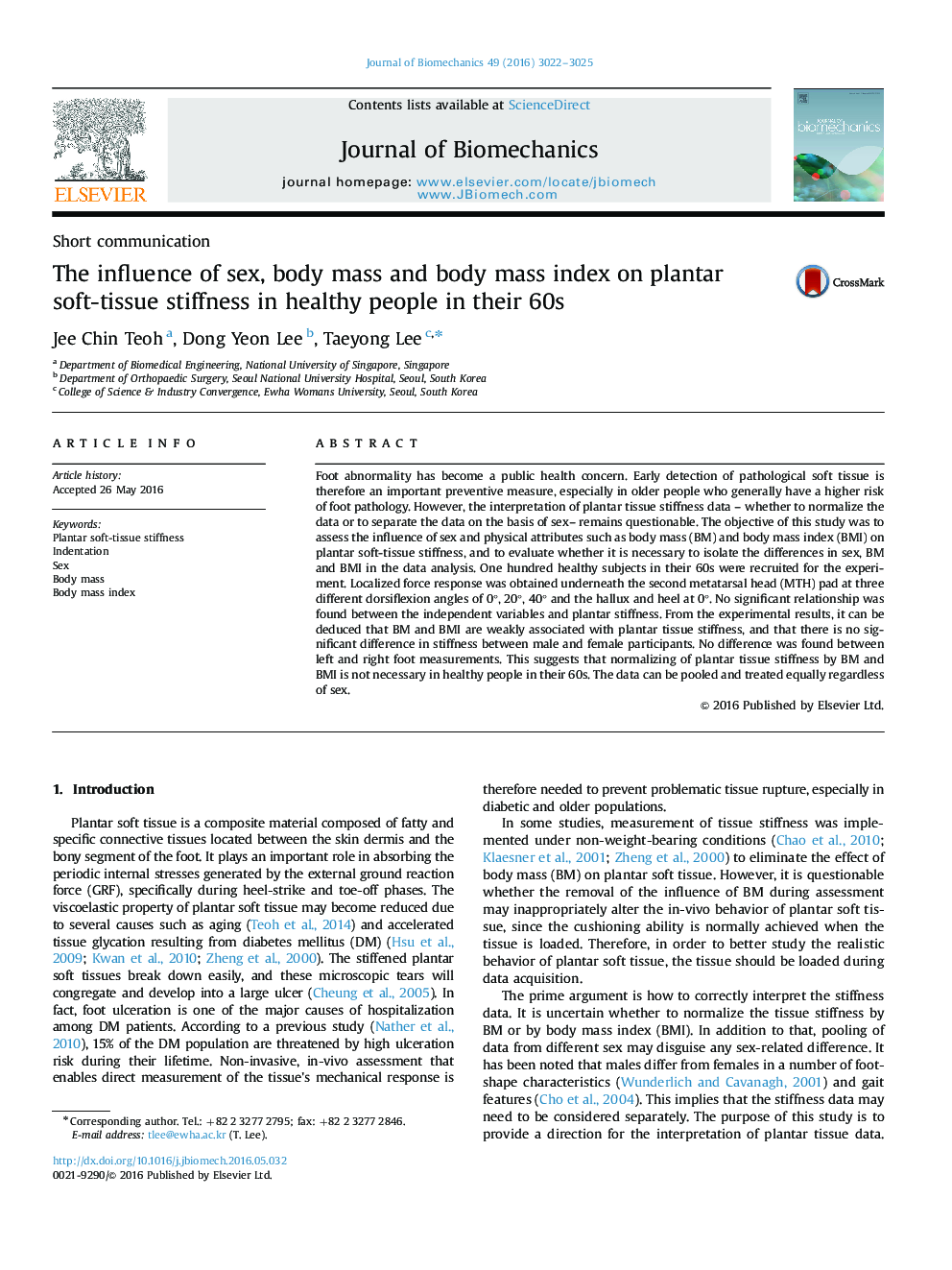| Article ID | Journal | Published Year | Pages | File Type |
|---|---|---|---|---|
| 5032485 | Journal of Biomechanics | 2016 | 4 Pages |
Abstract
Foot abnormality has become a public health concern. Early detection of pathological soft tissue is therefore an important preventive measure, especially in older people who generally have a higher risk of foot pathology. However, the interpretation of plantar tissue stiffness data - whether to normalize the data or to separate the data on the basis of sex- remains questionable. The objective of this study was to assess the influence of sex and physical attributes such as body mass (BM) and body mass index (BMI) on plantar soft-tissue stiffness, and to evaluate whether it is necessary to isolate the differences in sex, BM and BMI in the data analysis. One hundred healthy subjects in their 60s were recruited for the experiment. Localized force response was obtained underneath the second metatarsal head (MTH) pad at three different dorsiflexion angles of 0°, 20°, 40° and the hallux and heel at 0°. No significant relationship was found between the independent variables and plantar stiffness. From the experimental results, it can be deduced that BM and BMI are weakly associated with plantar tissue stiffness, and that there is no significant difference in stiffness between male and female participants. No difference was found between left and right foot measurements. This suggests that normalizing of plantar tissue stiffness by BM and BMI is not necessary in healthy people in their 60s. The data can be pooled and treated equally regardless of sex.
Related Topics
Physical Sciences and Engineering
Engineering
Biomedical Engineering
Authors
Jee Chin Teoh, Dong Yeon Lee, Taeyong Lee,
